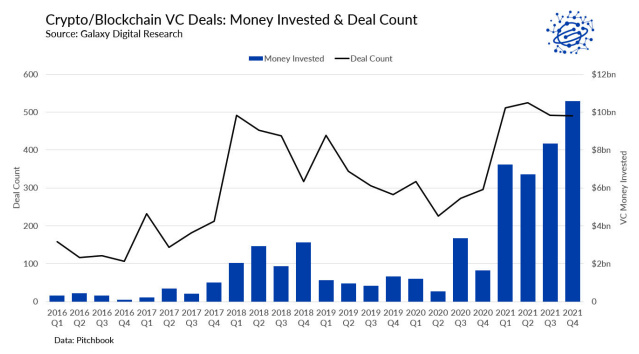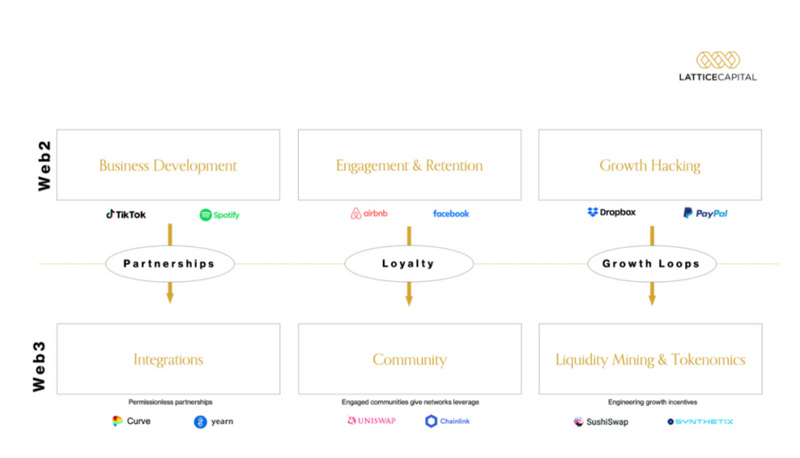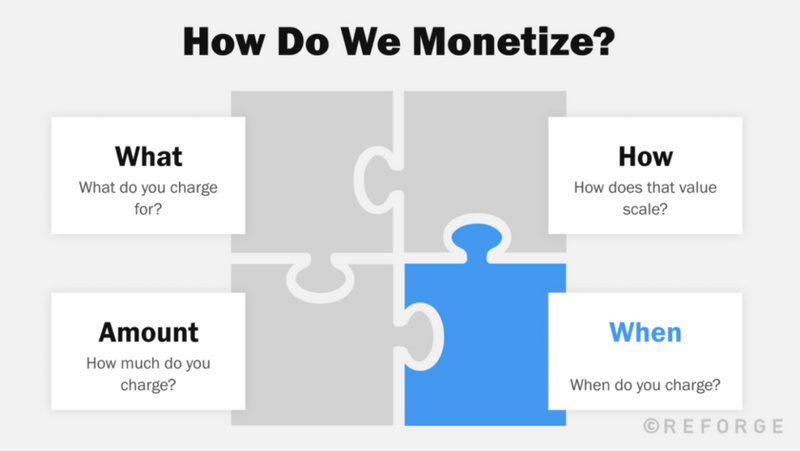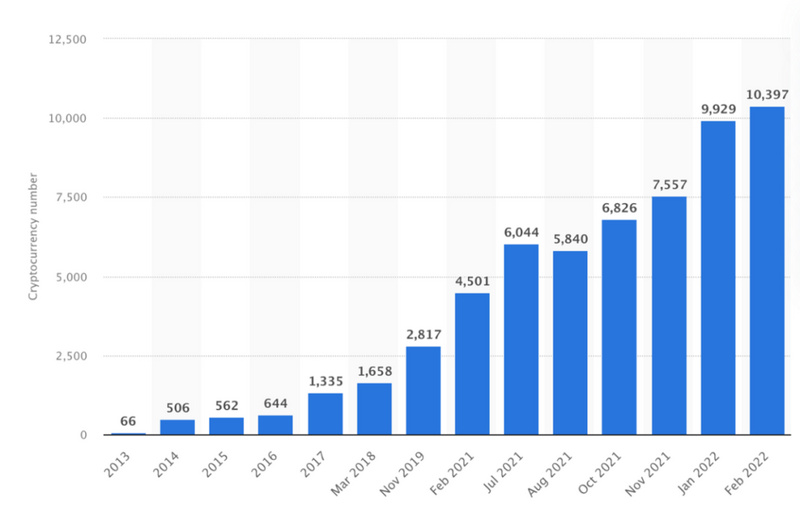How to bring the growth framework of Web2 into Web3 products?
Original Author: Matias Honorato
Original Title: Growth Frameworks from Web2 to Web3
Compiled by: DAOeayaki
This is a series of articles where DAOeayaki will explore how Web3 founders and builders can leverage some Web2 growth frameworks to scale successful products.
1. Growth Models for Web3
2. Developing Sustainable Growth Strategies for Web3
3. Building Your Web3 Growth Team
2021 was a record year for cryptocurrency and blockchain companies. We saw a massive influx of transactions and funding into the space; in the fourth quarter of 2021, global VC investment exceeded $10.5 billion, the highest of any quarter last year and surpassing the total for all of 2020. First, let’s take a look at the development of cryptocurrencies related to Web3.

I don’t think 2022 will slow down, as we have already seen investment funds raising significant capital, ready to deploy into the space. Some of the most important announcements this year include: Paradigm's $2.5 billion fund, Andreessen Horowitz's $2.2 billion fund, FTX's $2 billion investment fund, and Crypto.com recently announcing a $500 million fund.
As investors pour substantial funds into the ecosystem, expectations will also rise, and Web3 companies will have to go all out to achieve growth. Similar to what happened in the Web2 space a decade ago, we should expect to see a flood of companies entering the crypto space, racing to hire growth roles (which is already happening) and scrambling to build teams that can scale successful growth models.
It will be exciting to see its development, as I believe Web3 can achieve fundamentally different growth methods at various levels—from acquisition channels and strategies, user experience and onboarding experiences, to retention and engagement levers (more information will be covered in later articles). However, as decentralization, anonymity, protocol ownership, and user-owned data become the new norms, Web3 also introduces a range of different challenges for the field.
As we "speak," new Web3 growth frameworks and playbooks are being created. But which principles and systems from Web2 can we bring into this thriving new ecosystem?
Overview of Web2 Development
Before diving into the significant implications of growth for Web3, let’s provide a high-level overview of the content surrounding growth frameworks for Web2 companies over the past decade.
Andy Johns has a great quote that helps explain what growth means at its most fundamental level: "If finance has the cash flow in and out of the company, then growth has the customer flow in and out of the product."
As you may have heard before, growth cannot be defined by a specific set of strategies, silver bullets, or exact roles within a company. This applies to both Web2 and Web3 products.
Growth is a system that lies between the company’s mission, values, and business model, helping you define the following:
1. How does our product grow?
Brian Balfour and the Reforge team do an excellent job of breaking this question down into its fundamental parts.
Breaking it down into the following:
- How do we acquire?
- How do we retain?
- How do we monetize?
- How do we defend?
Viewing these questions through the lens of the specific growth loops in your business will help you build a holistic growth model for your company.
2. Four Fundamental Fits
Not just product-market fit, a well-structured growth model needs to find four fundamental fits: market-product fit, product-channel fit, channel-model fit, and model-market fit.
3. Growth Strategies
Once you understand how our product grows and fits into your community/market, channels, and business model, you can define a sustainable and scalable go-to-market or growth strategy.
4. Building a Growth Team
As more companies form teams to drive go-to-market and growth strategies, winning in growth will require you to not only have the best approach but also the best team structure to deploy that strategy as quickly as possible.
Casey Winters (former growth lead at Pinterest/Grubhub) separates these areas in his definition of growth: the purpose of growth is to expand the usage of products that have product-market fit. You can do this by building a playbook on how to scale product usage. This playbook can also be referred to as a growth model or loop.
Most product teams are built to create or enhance the core value offered to customers. Growth is about connecting more people to that existing value.
We could spend hours trying to narrow down the exact meaning of growth and how to apply it to different types of products, businesses, and teams, and there is already excellent content available for you to dive deeper into this topic.
So now that we have a basic understanding of what growth as a system can solve for your product, let’s break it down specifically for Web3 companies.
Growth of Web3 Companies
How does your Web3 product scale?
You can break down this question statement into four core questions you need to answer, laying the foundation for our growth model:
How do we acquire?
Lattice Capital has provided a detailed analysis of effective acquisition strategies currently being developed by Web3 companies—partnerships, user ownership, and token-driven growth pools are the pillars of Web3 growth strategies.

However, the strategies outlined above rely on the assumption that their target users are already familiar with or have entered the Web3 ecosystem, not necessarily focusing on how or who will help the next billion users.
Current acquisition strategies for crypto companies remain quite chaotic, filled with unknowns, especially considering the inherent friction that newcomers must navigate when starting with Web3—from joining Discord, to setting up Metamask, purchasing NFTs, finding public bounties, and so on. The system is still rife with friction and barriers that make it easy for "normies" to join and participate in the space, and we see competition among companies rapidly intensifying to chase the currently crypto-educated consumers.
The winners in the Web3 space will be those who can clearly define:
- Where does the product sit on the spectrum of centralized vs. decentralized?
- Is this a network effect-driven business?
- What does success look like? (user growth, TLV, developer activity, transaction volume, connected wallets, etc.)
How do we retain?
Retention is the foundation of any growth strategy. For Web2 companies, retention rates are the basis for measuring product-market fit, and positive retention rates often help drive more acquisition and revenue for the company.
One of the biggest challenges I see between Web2 and Web3 growth is user retention and how we view it. Why? User or customer retention in Web2 is driven by our ability to engage and "re-engage" specific users through email, push notifications, in-app (essentially lifecycle marketing). But in Web3, there is no concept of "users" as identifiable individuals, and we cannot target them through traditional lifecycle strategies.
For example, you can only rely on wallet addresses as the sole "user" identifier, rather than email. The issue is that individual users can access your dApp using multiple wallets, which can dilute the accuracy of your data.
Defining the meaning of "identity" in Web3 is one of the most challenging and interesting areas for the field in the coming years. It turns out that user ownership and governance, on-chain activity, and community engagement are some of the fundamental mechanisms that will influence the loyalty/retention programs of Web3 companies in the future.
My guess is that many of these questions will start to be answered this year. Emerging verticals over the past two years, such as NFTs, DeFi, and DAOs, will have to iterate and innovate quickly on how to address customer churn and user retention issues to maintain their current "upward" trajectory, especially as macroeconomic conditions may contrast with the current optimism in the crypto market.
How do we monetize?
For both Web2 and Web3 companies, "monetization is not just about price," as described in Reforge's experiments + testing program, which has a great framework for addressing this issue.

When we think about all the elements of monetization strategies, we need to realize that the decisions we make around each specific element will create friction for those who become paying customers or product users, which applies to both Web2 and Web3 companies.
"If users are very familiar with the content we charge for, and they understand it well, that’s low friction. But if the content we charge for is brand new in the market and not well understood, an unknown, that creates high friction." --Reforge
So far, large centralized Web3 companies like Opensea or Coinbase have employed "well-known and very easy to understand" monetization strategies, such as transaction fees or listing/sale fees, which reduce the friction for new users to join and use their platforms.
But in terms of new revenue streams, Web3 offers a broader range of possibilities for decentralized organizations. For example, it will be interesting to see how "free-to-X" DAOs, games, Web3 social networks, etc., convert their funds into revenue through DeFi strategies, breaking the common notion that "if you’re not paying for the product, you are the product."
How do we defend?
This chart from Statista shows how quickly new Web3 and crypto companies have emerged over the past few years, with no signs that this trend will slow down anytime soon.

Although Web3 and crypto are still very nascent industries, their intense competitiveness has already been proven. For example, LooksRare drove $100 million in NFT sales on its launch day and is now a significant competitor to Opensea.
"Growth = speed, and speed is the competitive advantage in today’s market." --Matt Bivons
As more competition enters the space, current distribution channels will become less effective.
We are seeing some very interesting things happening around user ownership, network participation, token economics, and more. However, the defensive walls in the Web3 ecosystem will have very similar foundations to the growth of some of the most successful Web2 companies; network effects, strong communities, and organic growth loops.
Building Our Growth Model
In short, your growth model is a system or loop that represents the qualitative or quantitative levers that inform the growth of your product.
Answering the questions we encountered in this article will help your company clearly define and communicate strategies, goals, metrics, priorities, and teams to lay the foundation for sustainable and rapid scaling.
"When I ask, 'How does your product grow?' it’s one of the most common mistakes founders make. The answer is often a long list of linear strategies. This is usually because there’s no assumption in the question about what the growth engine is, so they try to compensate by piecing together a lot of little things." --- Brian Balfour
Traditional Web2 growth frameworks can serve as a practical guide for getting started and provide a proxy for how successful products grow. Product mission and purpose, incentive mechanisms, and thriving communities seem to be the pillars of the current Web3 growth model, but as more mainstream users enter the space, there is still much to discover, test, and learn.
"In the Web3 growth expert community Safary, we are defining what growth looks like in web3."
In the next article, we will break down these current models using a framework and define the principles of sustainable and scalable growth strategies.









